Submitted by WA Contents
gad·line+ studio created could-like transparent and light reading space hovering in the mountains
China Architecture News - Dec 17, 2019 - 13:49 13731 views

gad·line+ studio created a cloud-like mini library and reading space hovering in the mountains in Daiyue District, Tai’an City in China, adjacent to the Shenlong Grand Canyon, with Mount Tai, the top of the five sacred mountains, in the east.
Named Jiunvfeng Study on Mount Tai, the 287-square-metre area features a reading space, a library and a small lobby overlooking the grand canyon and lush forest.

Image © zystudio
The curvaceous structure is surrounded by mountains, full of rocks like flocks of sheep, with the broad vision of overlooking the gorge and gully and looking out mountains and peaks. On the rocky mountain in the north, the contrasting white is left vacantly, which was the original idea of the design.
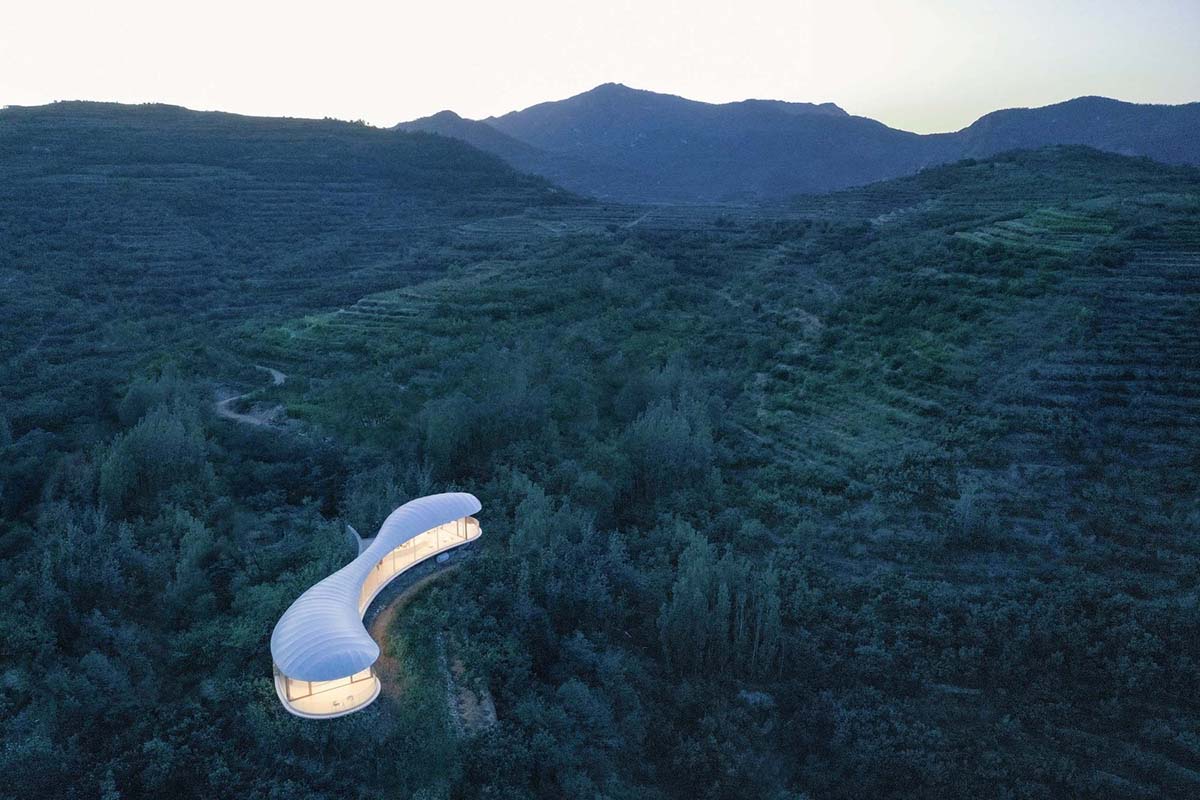
Regarding the site conditions and form, the architects compared with the magnificence and sublimity of Mount Tai, Jiunvfeng is simple and restrained. The architects hoped to build "a floating cloud wadding hovering in the mountains" to respond to the magnificent cloud sea of Mount Tai.
The study is located at the high point of the mountain ridge, with mountains in the east, the village in the west, it can be seen when driving to circle up the mountain. The building form can be divided into three parts from top to down: the white “cloud body”, transparent glass and thick rubble wall base.
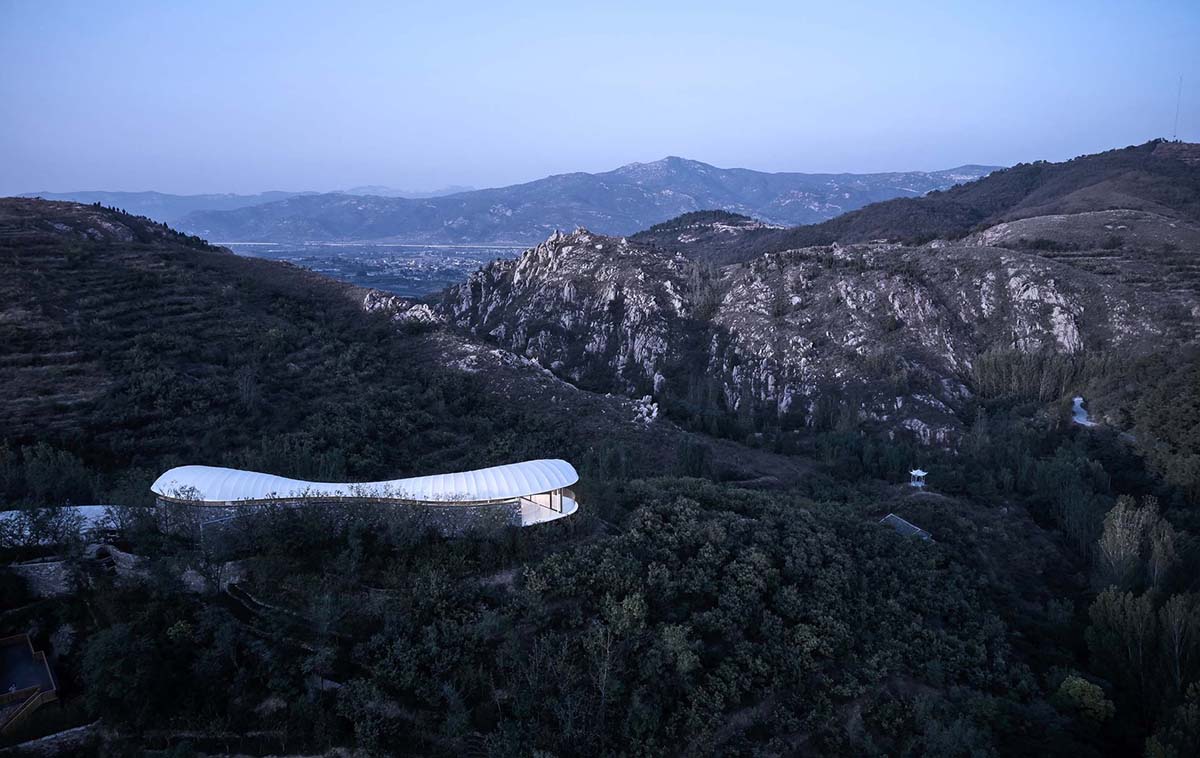
Image © zystudio
The north side faces the wide interface of canyon and peak. The narrow corridor at the entrance connects the coffee bar and the reading area at the two sides. It blurs the boundary between the architecture and the natural landscape, giving visitors and readers the illusion of being in the top of forests and mountains.
For material and structure, the architects tried to get a light structure, expressing the building in the correct embodiment.
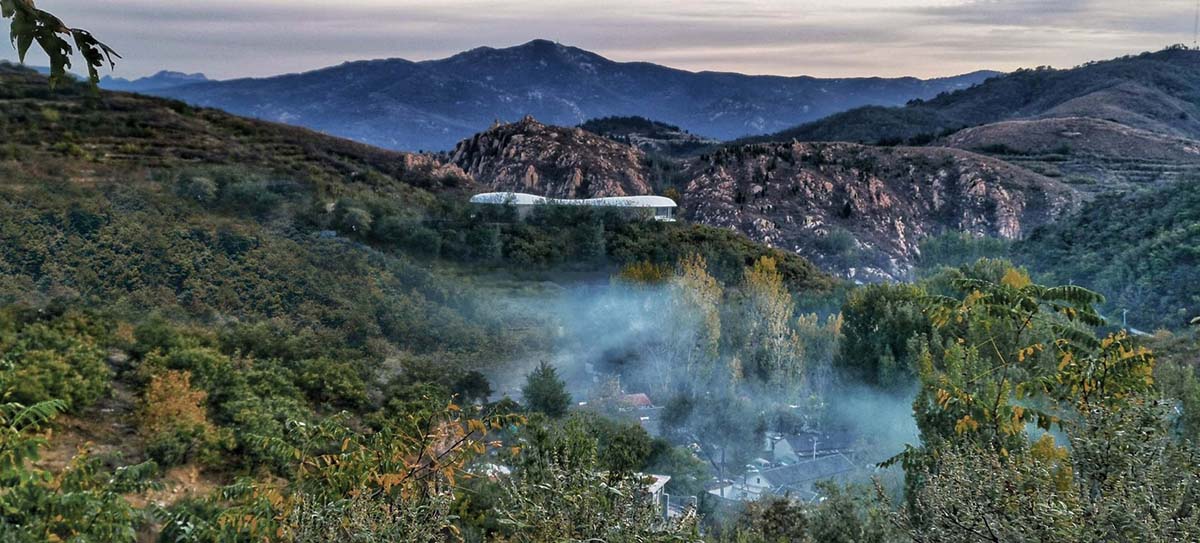
Image © Bing Pan
"For the shaping of the concept of cloud flocculation, we hope to highlight the following key words: floating, light and transparent," said the architects.
"In the natural conflict between the soft intuitive cognition of "cloud" and the simple and hard mountain environment in northern China, it gives people a relaxed and pleasant intuitive perception."
"The light steel and membrane structure system used in the main building has the characteristics of firmness, reliability and lightness, which enables the design to draw the thin and stretching shape with the natural curve on the top of the hill," they continued.
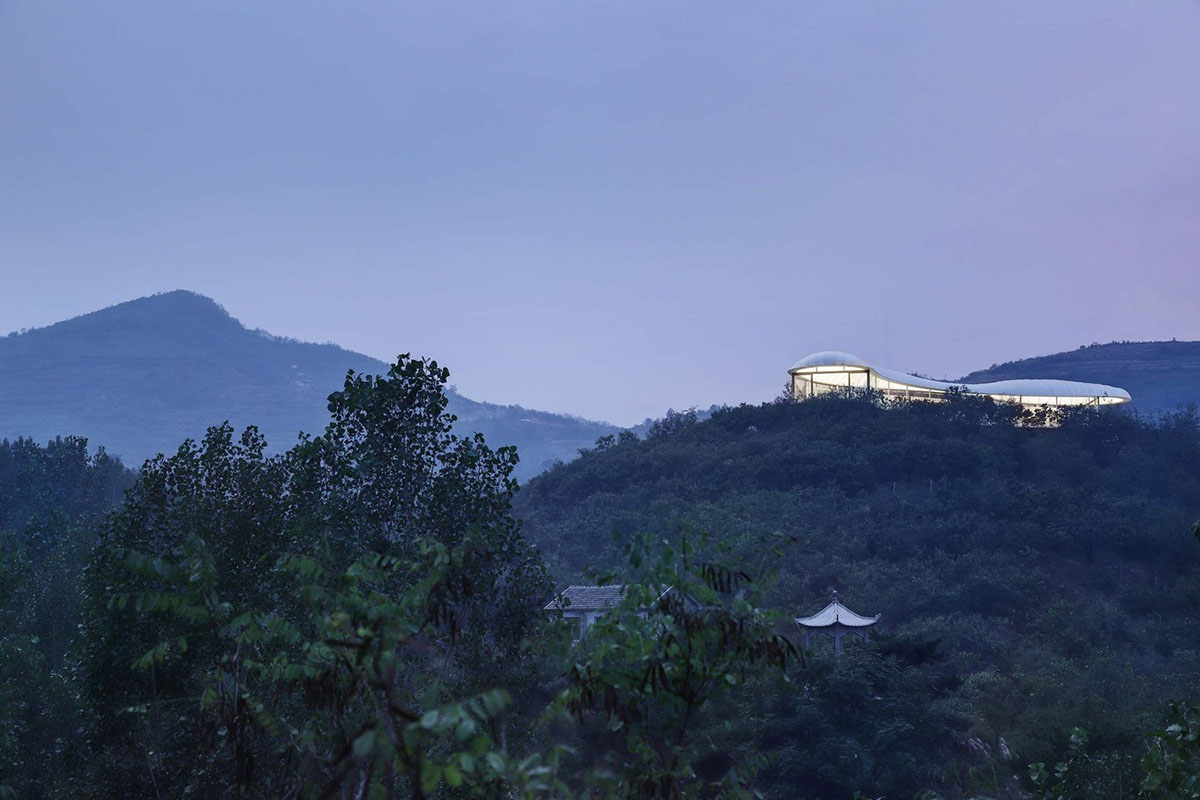
The transverse base structure shrinks to a maximum extent, with balconies extending on each side, creating a sense of suspension. The double-layer white membrane inside and outside the roof is drawn by a series of arched light steel keels with gradual changes in size, which ensures the fluent, soft and smooth shape of the roof.

Image © zystudio
Near the south side of the village, the wall is made of local rubble, which is thick and solid, melting into the mountain stepping up, and following the primitive temperament of residential buildings. The curved wall interface guides to the entrance, which indicates the orientation relation between the whole building and the site.
The high glass windows in rows between the rubble wall and the roof naturally transit the "heaviness" and "lightness" in the vertical direction which not only meets the needs of indoor natural ventilation and lighting, but also creates an ambiguous relationship between the rubble wall and the white membrane roof which wants to break free but is still related with each other.
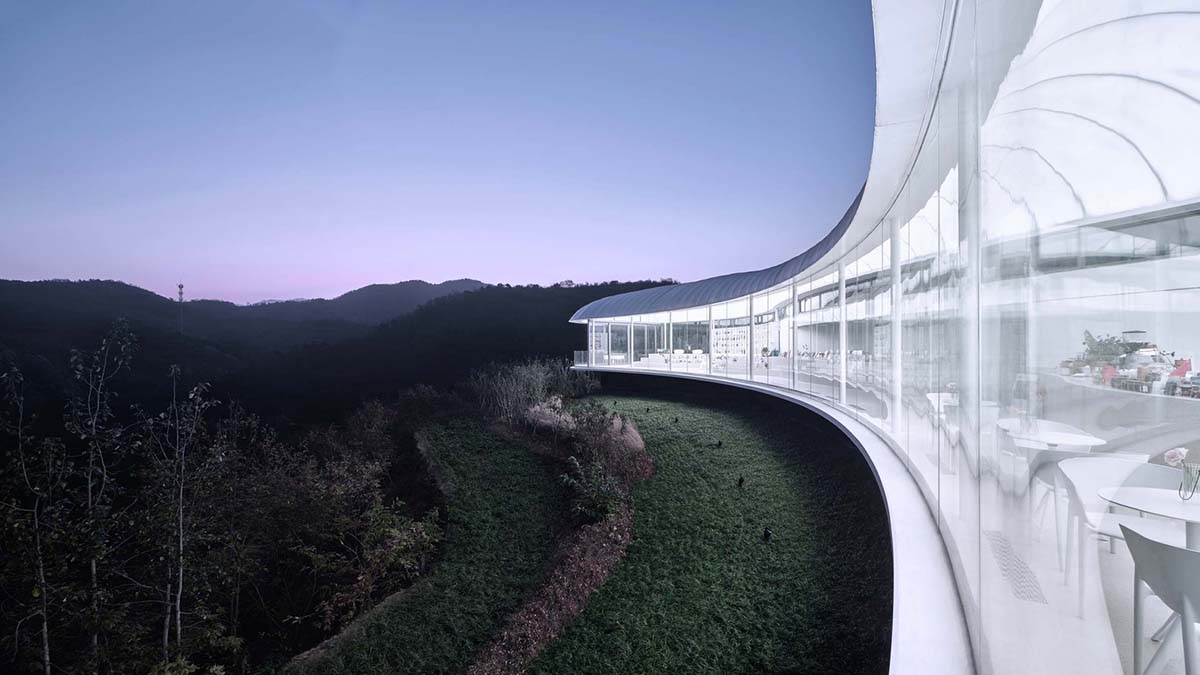
Image © zystudio
The northern facade facing the canyon and the mountain unreservedly adopts a large area of rimless glass windows, and the transparent large glass accommodates the external flowing scenery, while the solid structure below the roof is hidden. The "cloud" looks like floating on the rocks from a distance.

Image © zystudio
The bookshelves and seats in the interior are also laminated in an integrated arc shape. The curve corridor, which turns from wide to narrow, then to wide, naturally transits the dynamic and static public areas, and constructs the space boundary in a gentle way.
The inner membrane at the top of the room is covered with light strip. At night, the whole curved inner membrane radiates evenly, and the light escapes from the high windows between the stone walls and the membrane surfaces. It looks like a cloud with halo from the distance.
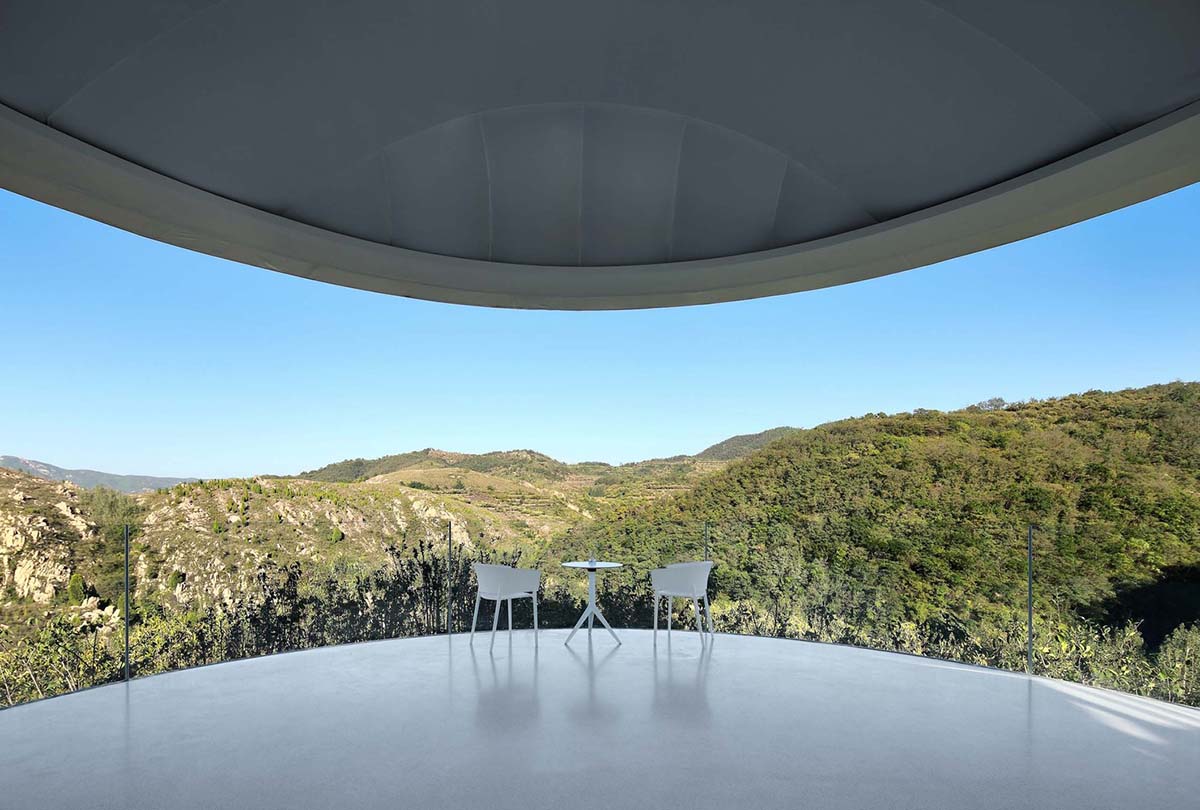
In order to maintain the integrity and purity of the membrane surface on the top of the room, we chose the ground air system. The main air duct under the floor is hidden in the side close to the rubble wall, and the branch pipe is upturned inside the ring beam, connecting the ribbon outlet through the cavity between the floor and the surface.
While satisfying the requirement of air volume, the overall height of the outer edge of aluminum plate is reduced to the maximum extent, so as to ensure the light floating effect of the building.
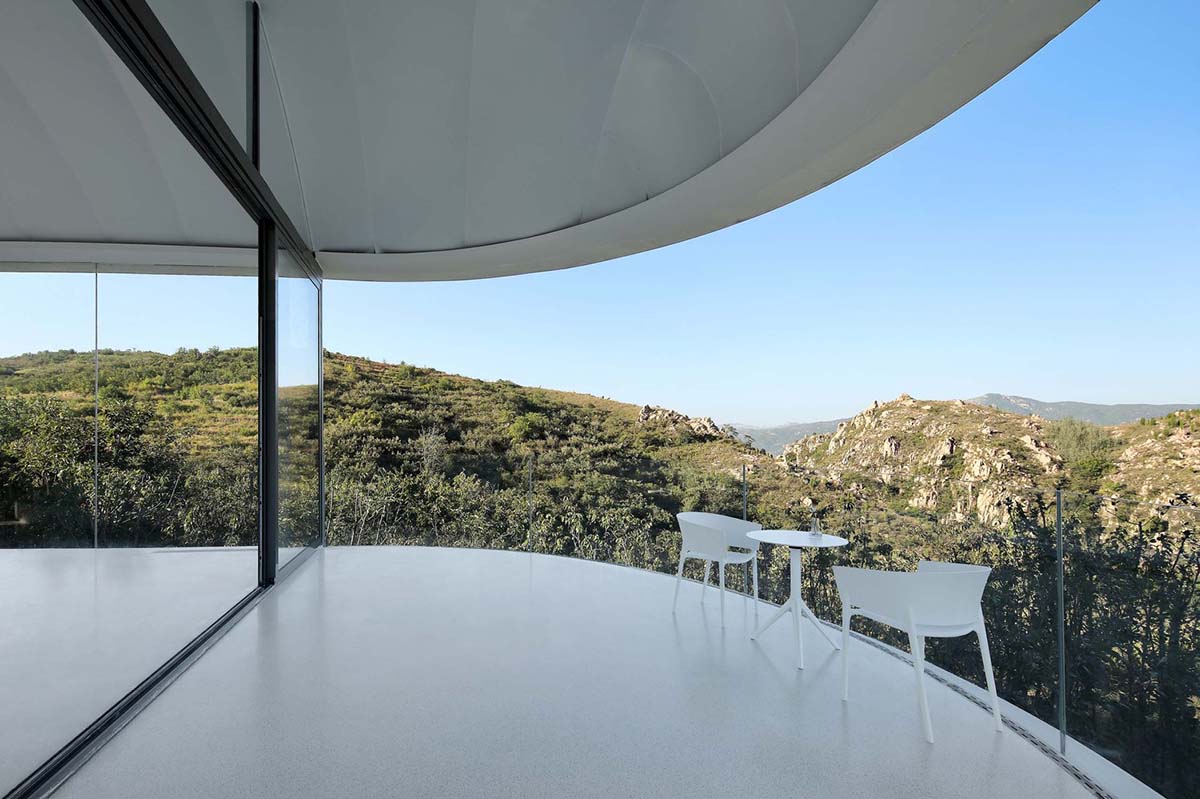
As the architects highlight, the project began to be constructed in April 2019 and was completed in September 2019. The precise and rapid assembly of the light steel construction system ensured the construction period.
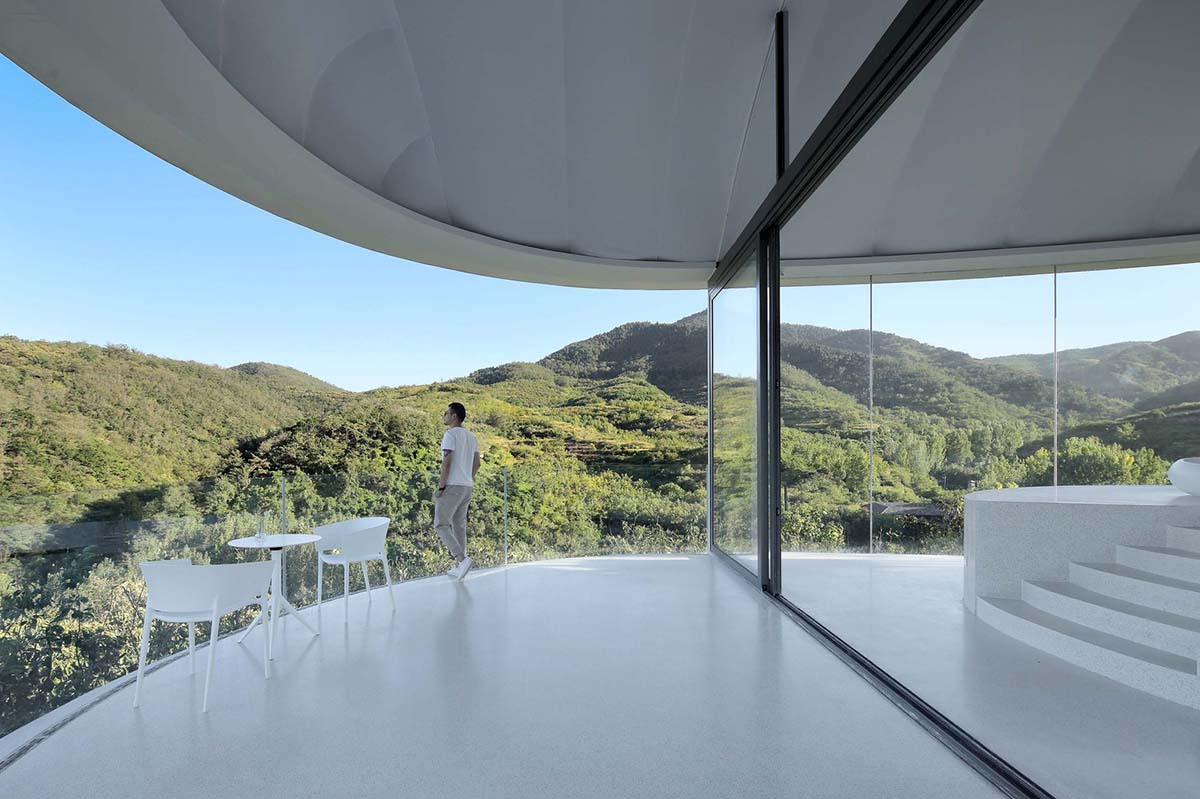
At the same time, the design work ran through the whole construction process: the uncertainty of the site forced the architect to re-perceive the site, so that the design can be updated and adjusted accordingly.

Image © zystudio
Foundation construction
To make the whole building "suspend" on the ground, the design foundation is slightly above the surrounding ground. After surveying the terrain, illumination and landscape resources, it is found that the canopy height and density condition of the existing vegetation directly affect the base location of the building and the view height of the landscape, so the base height was re-adjusted to 400mm.
Main structure construction
The precast element in the factory ensured the accuracy of construction. A thin steel column with a diameter of 150mm supports the arc-shaped ring beam, and a double-deck 28 pairs of arched keels were set up on the ring beam. This series of arc-shaped keels with gradual changes in size and dense arrangement provides support for the smooth tension of the inside and outside double layer membrane.

Image © zystudio
Structure installation of inner and outer membrane
Wire meshes were pulled and connected between 28 pairs of arched keels, and the tin foils were spread flat to reflect the light of LED light strip evenly, the bagged insulation cottons were covered and fixed on the tin foils. The inner lining fixed on the inner side of the lower keel is the light box cloth, which was finished by fine hanging and auxiliary tension with metal buckles.
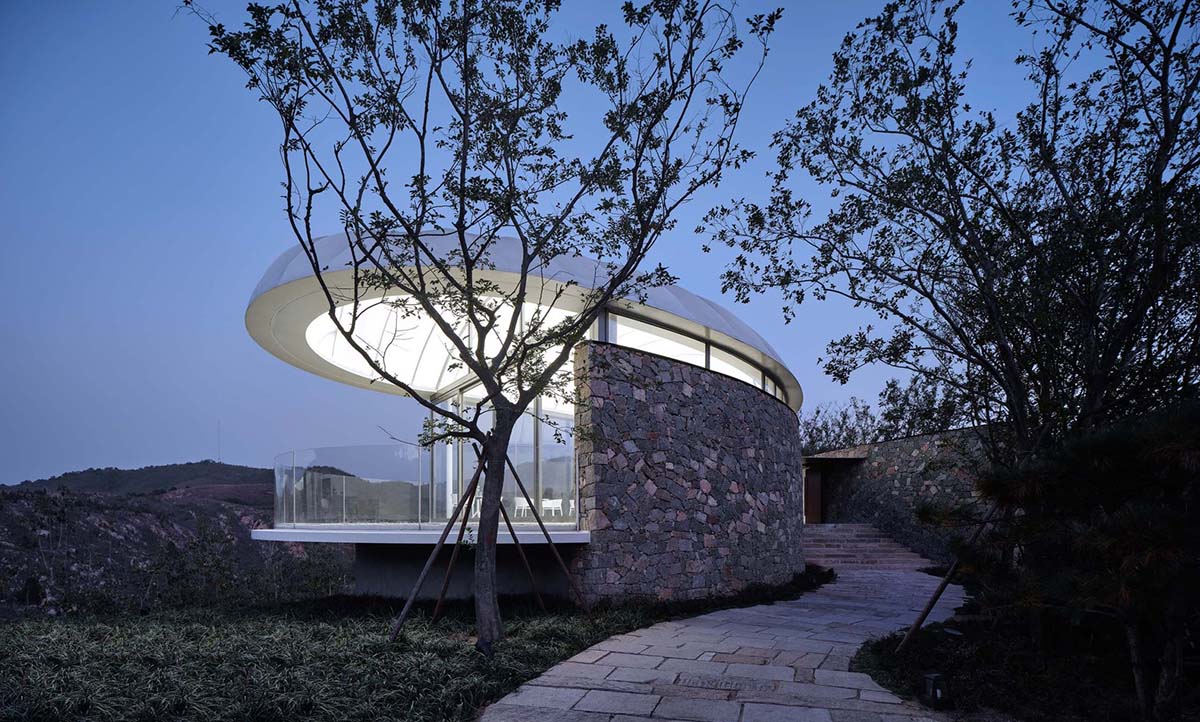
Image © zystudio
Rubble-wall masonry
The south side entrance and the elevation were built with the rubble wall, supplemented with the small steel column slipknots. The architect selected suitable size and color of rubble on site and guided the construction team to complete the masonry.
Lighting and indoor construction
The LED light strip is arranged lengthwise above the lower keels. To realize the large-area uniform floodlight effect of the indoor membrane bottom, the tests of different arrangement, illuminance and interval of LED light strip were carried out on site.
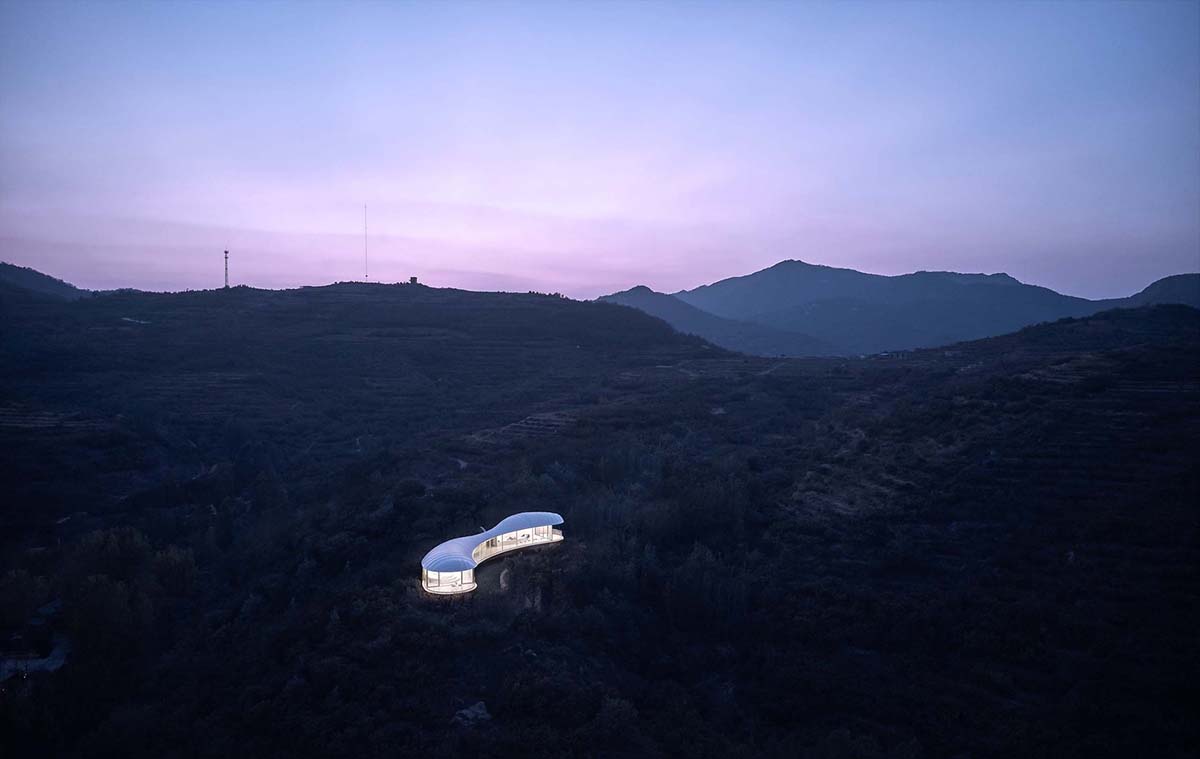
Image © zystudio
When morning light slightly illuminates, the transparent glass body is hidden in the forest; when night falls, the "cloud" floats on the mountain with a faint light; visitors inside are totally immersed in a relaxed space atmosphere to read and meditate.
The architectural space created by the environment exists in the natural landscape of dynamic evolution, and we ascribe it to nature in the simplest and the most direct way, so as to live with nature in harmony.
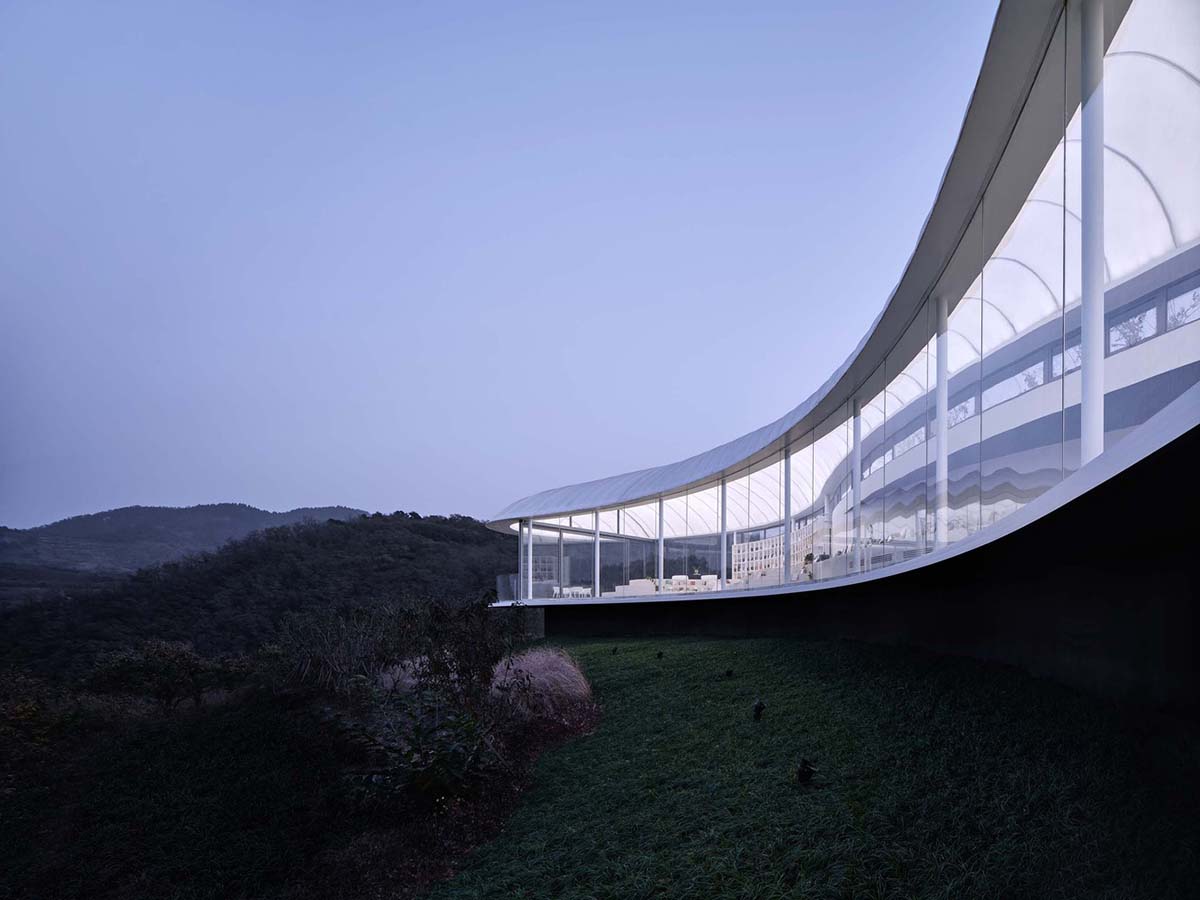
Image © zystudio
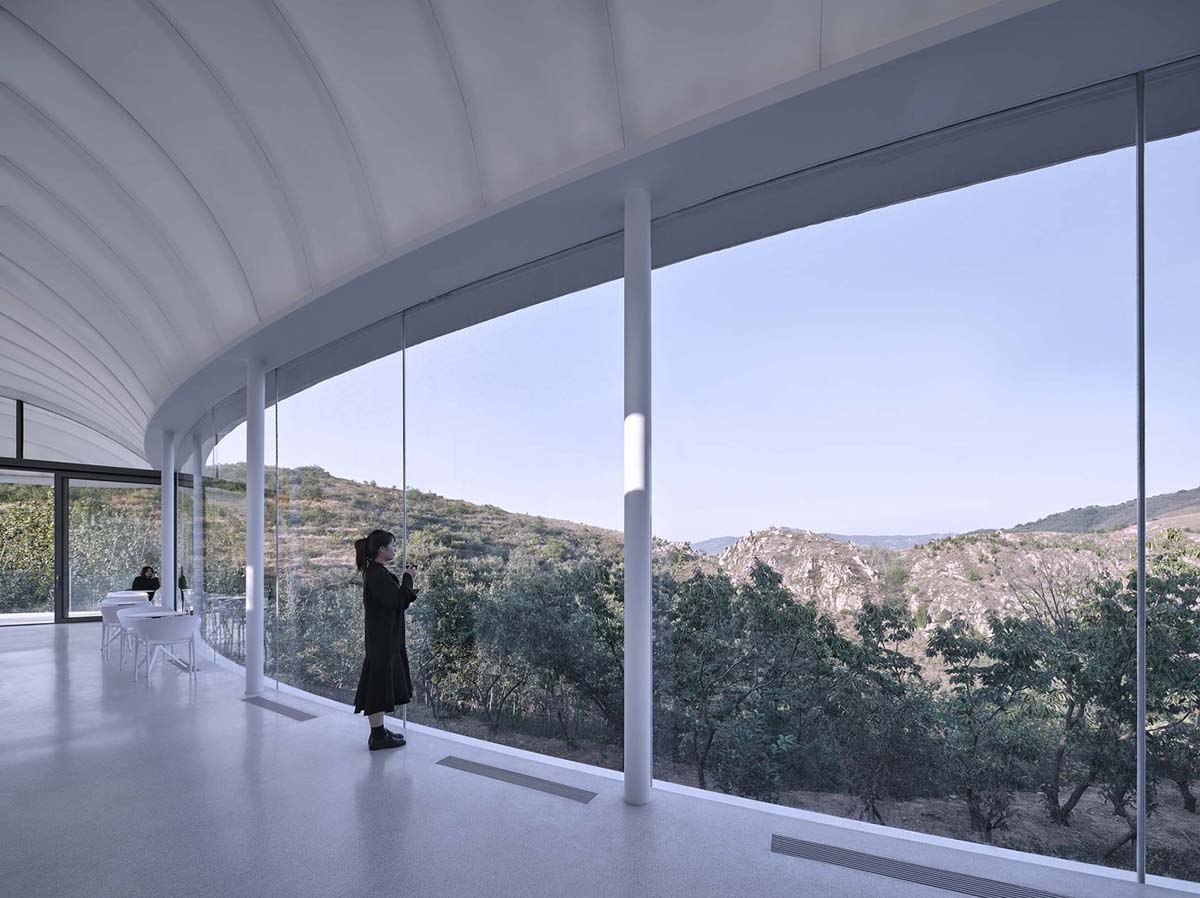
Image © zystudio
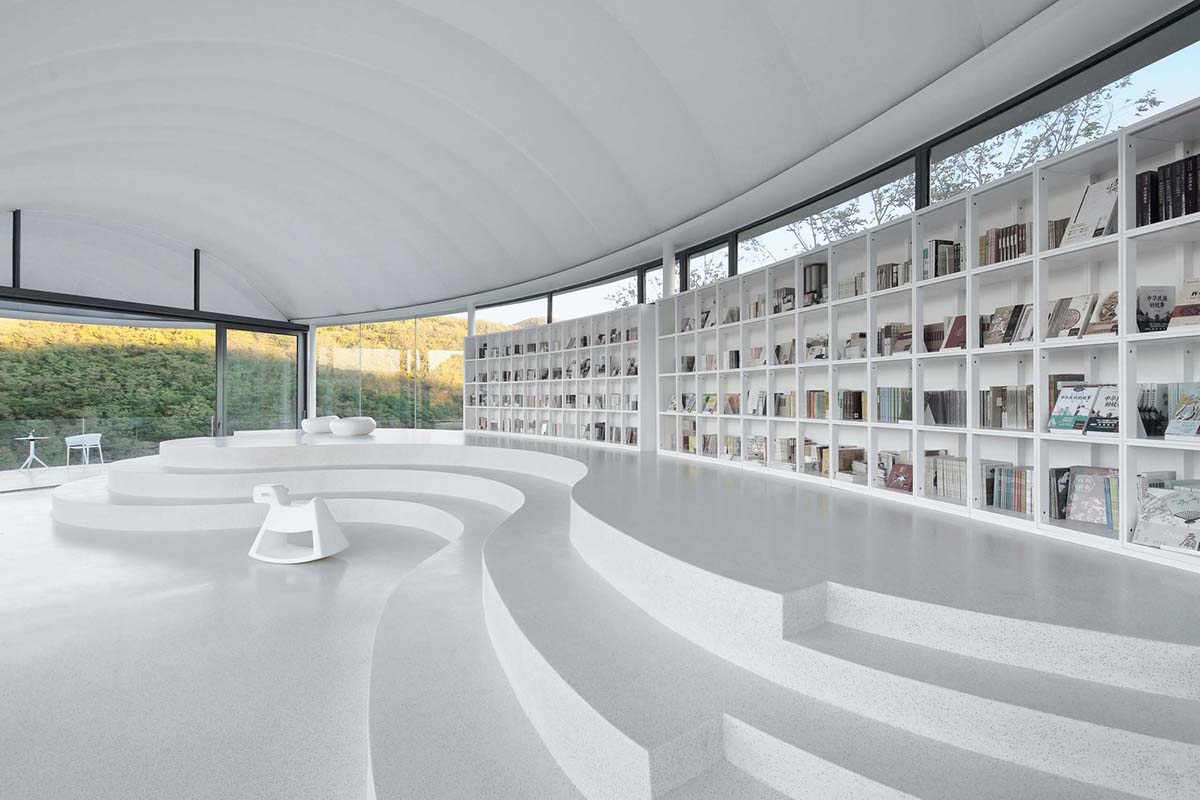
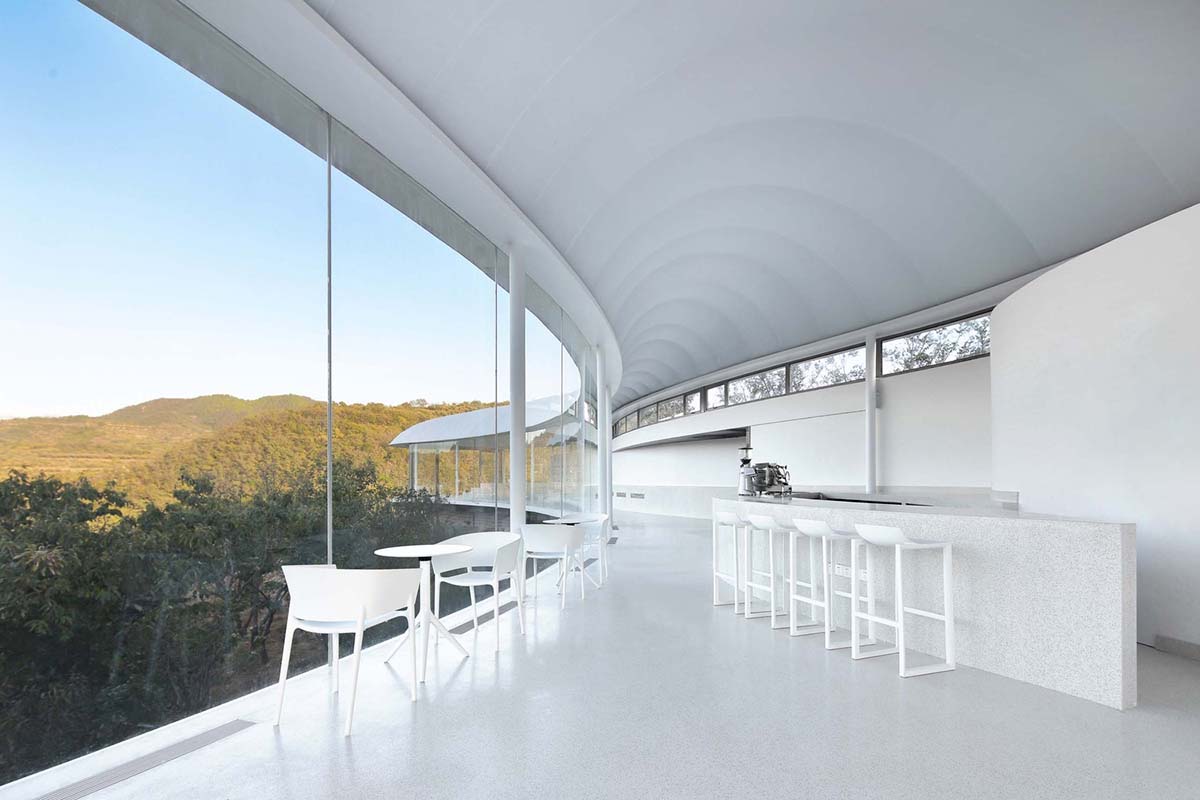
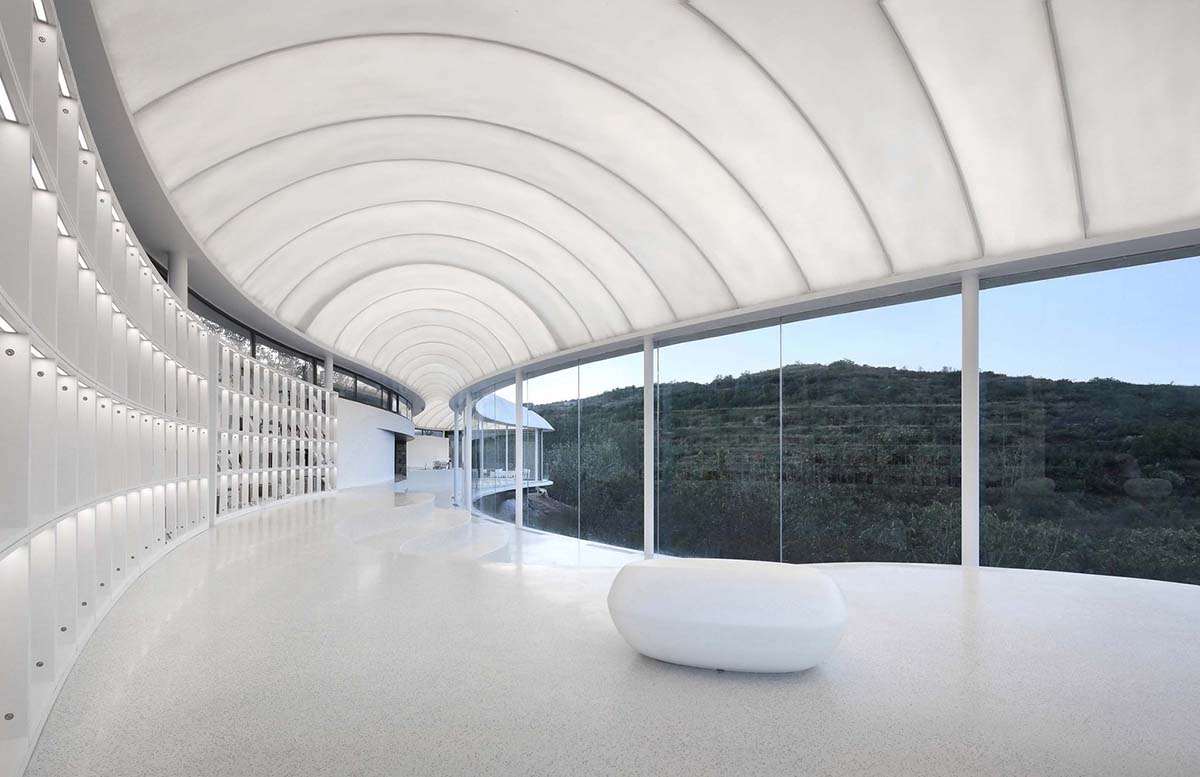
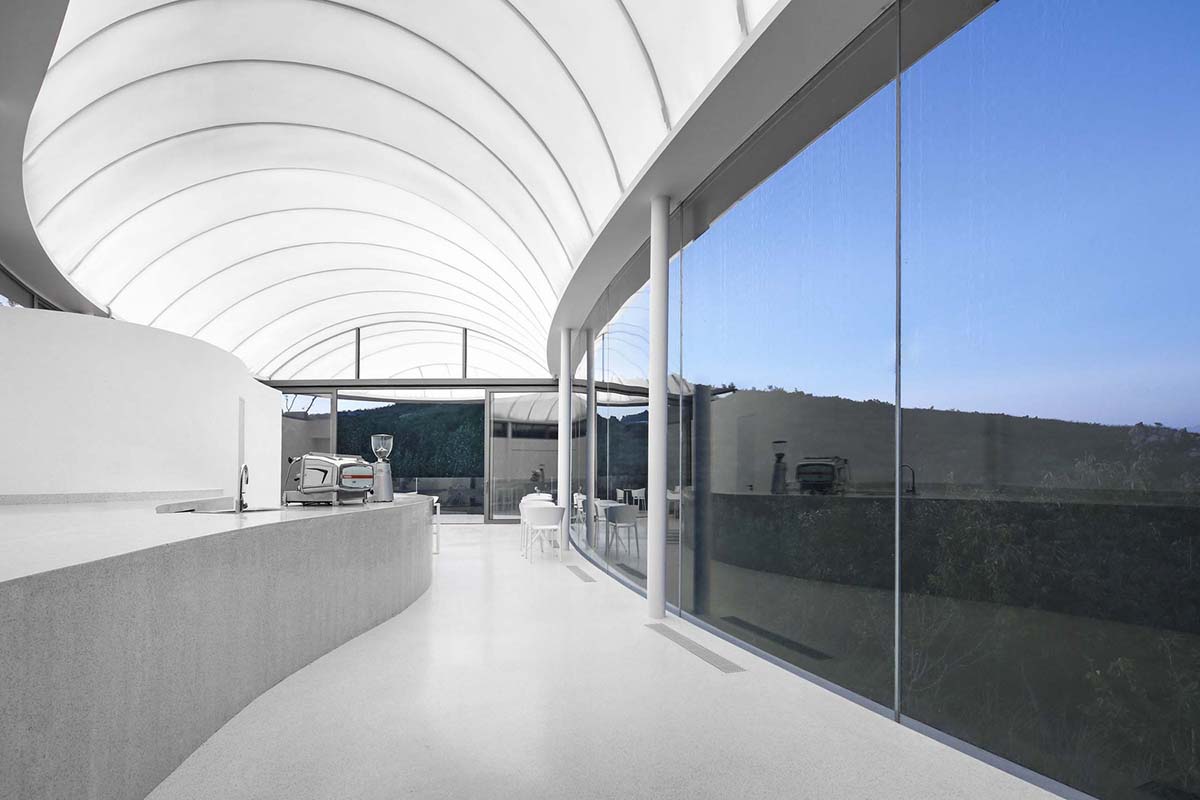
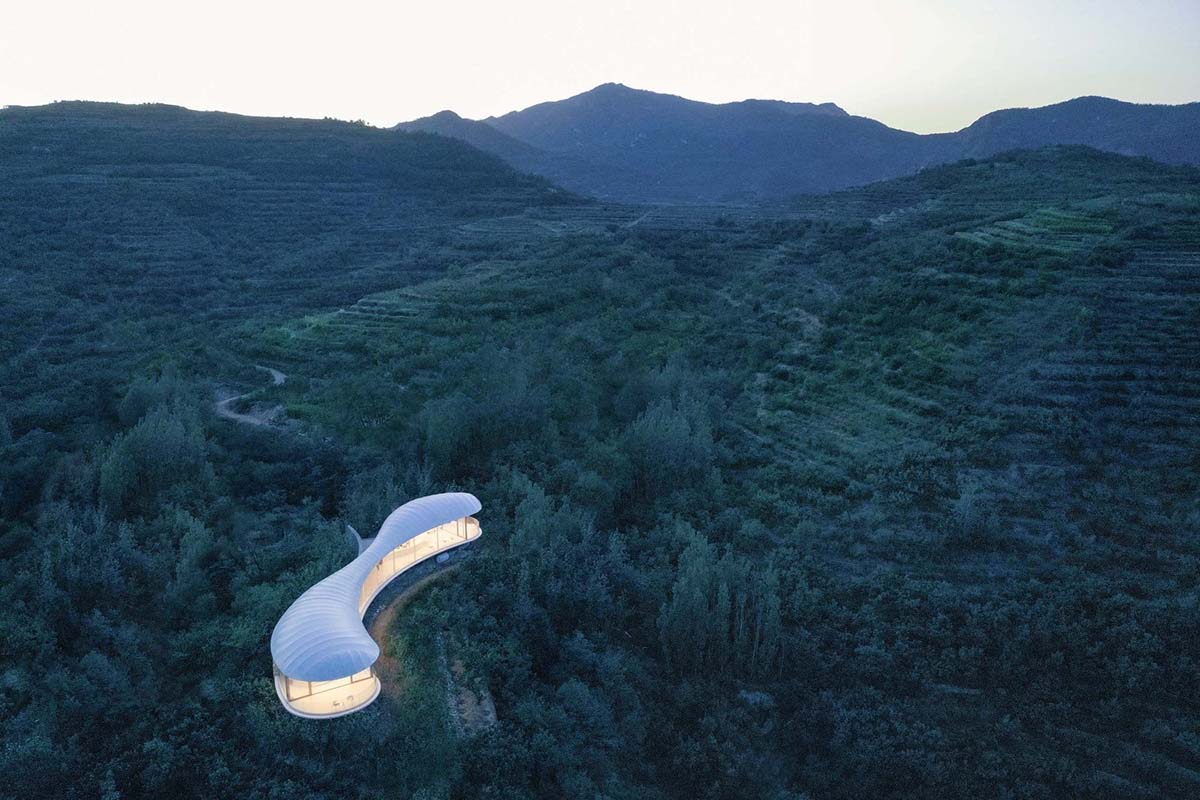
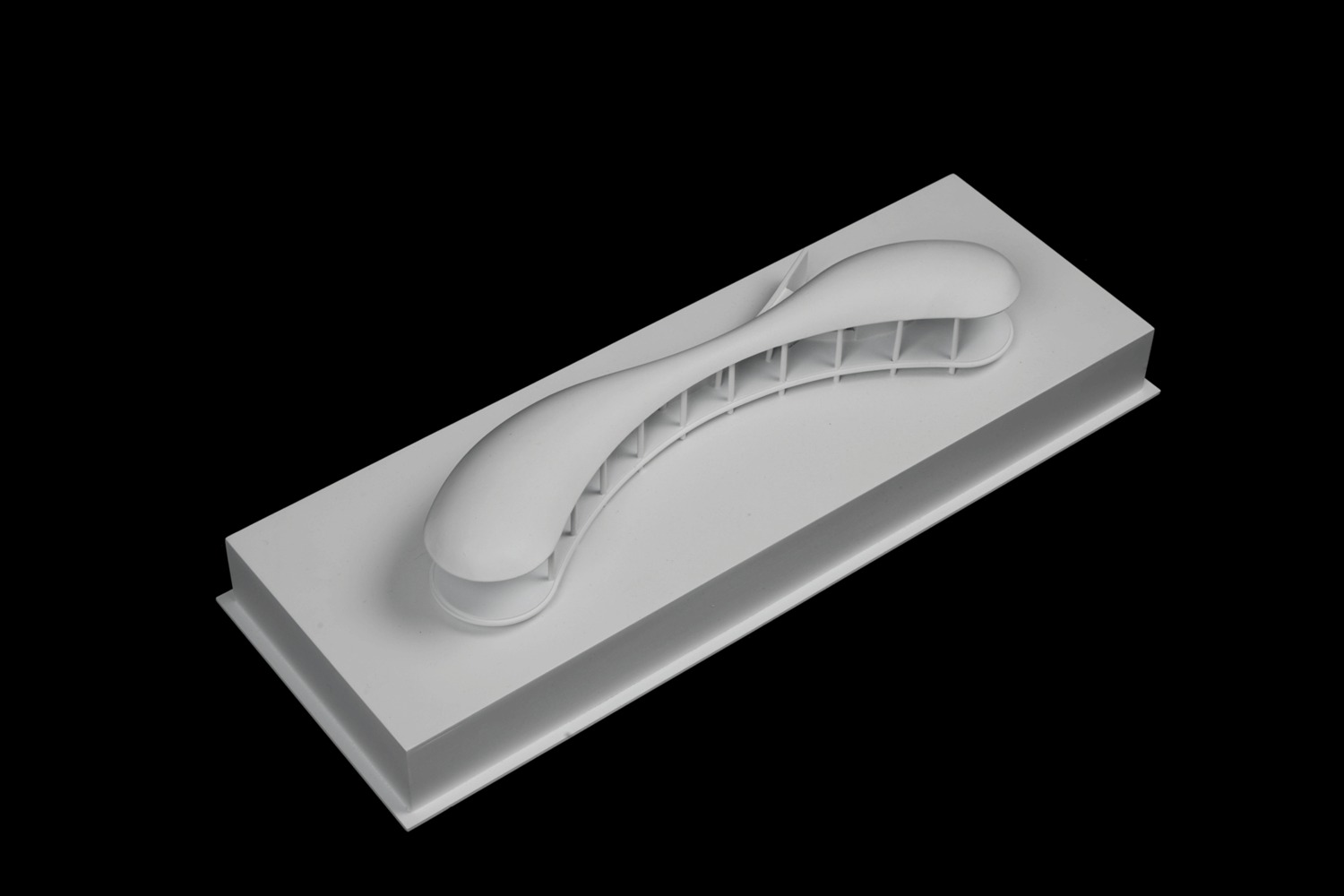
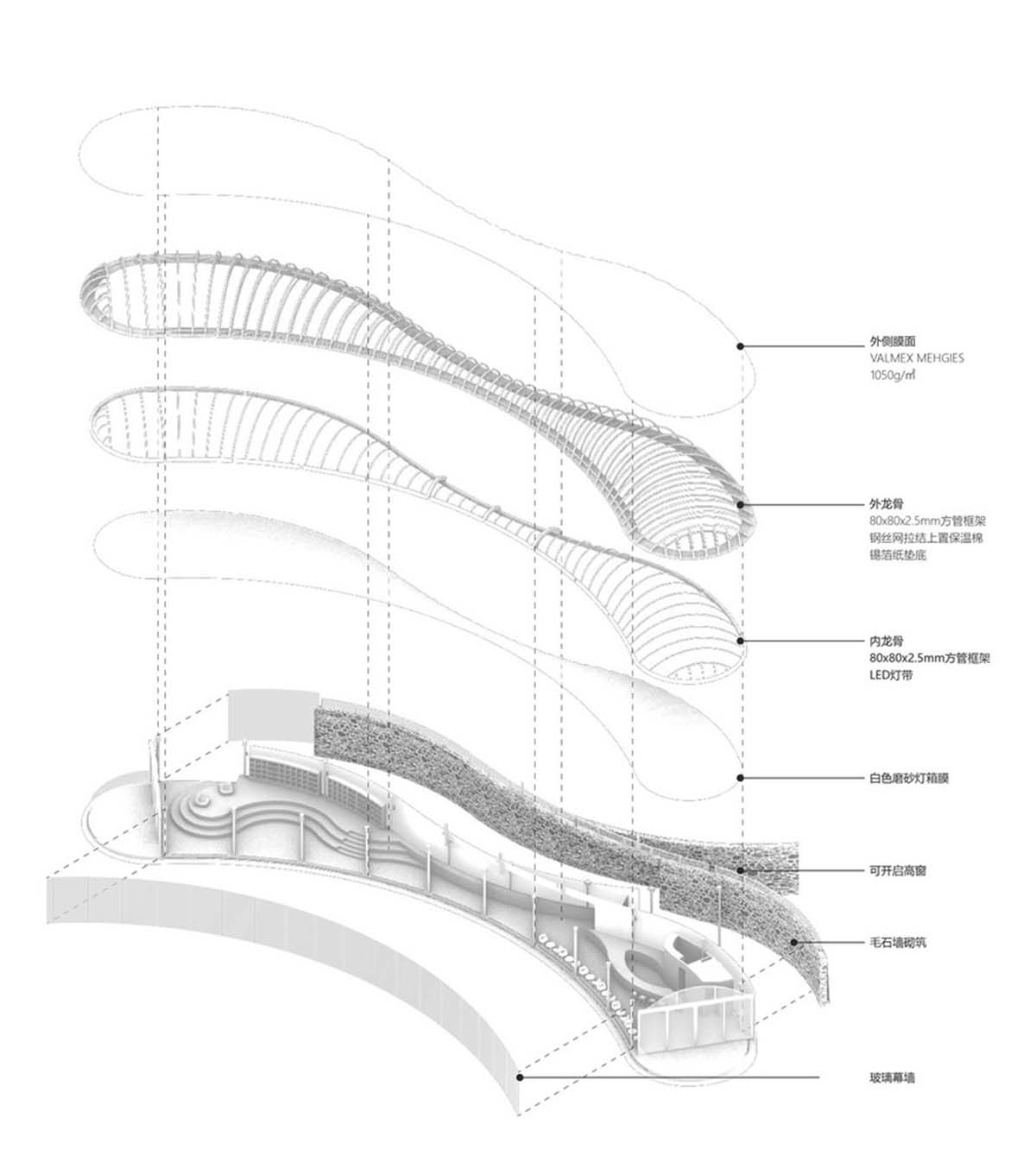
Exploded axonometric diagram
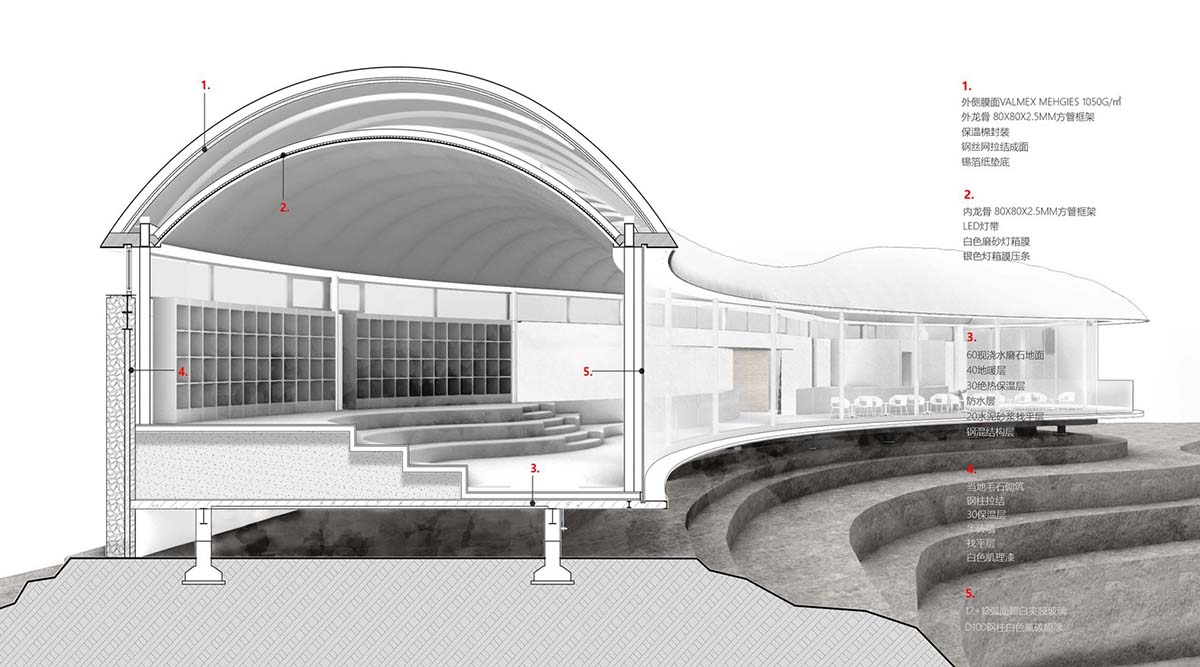
Perspective section
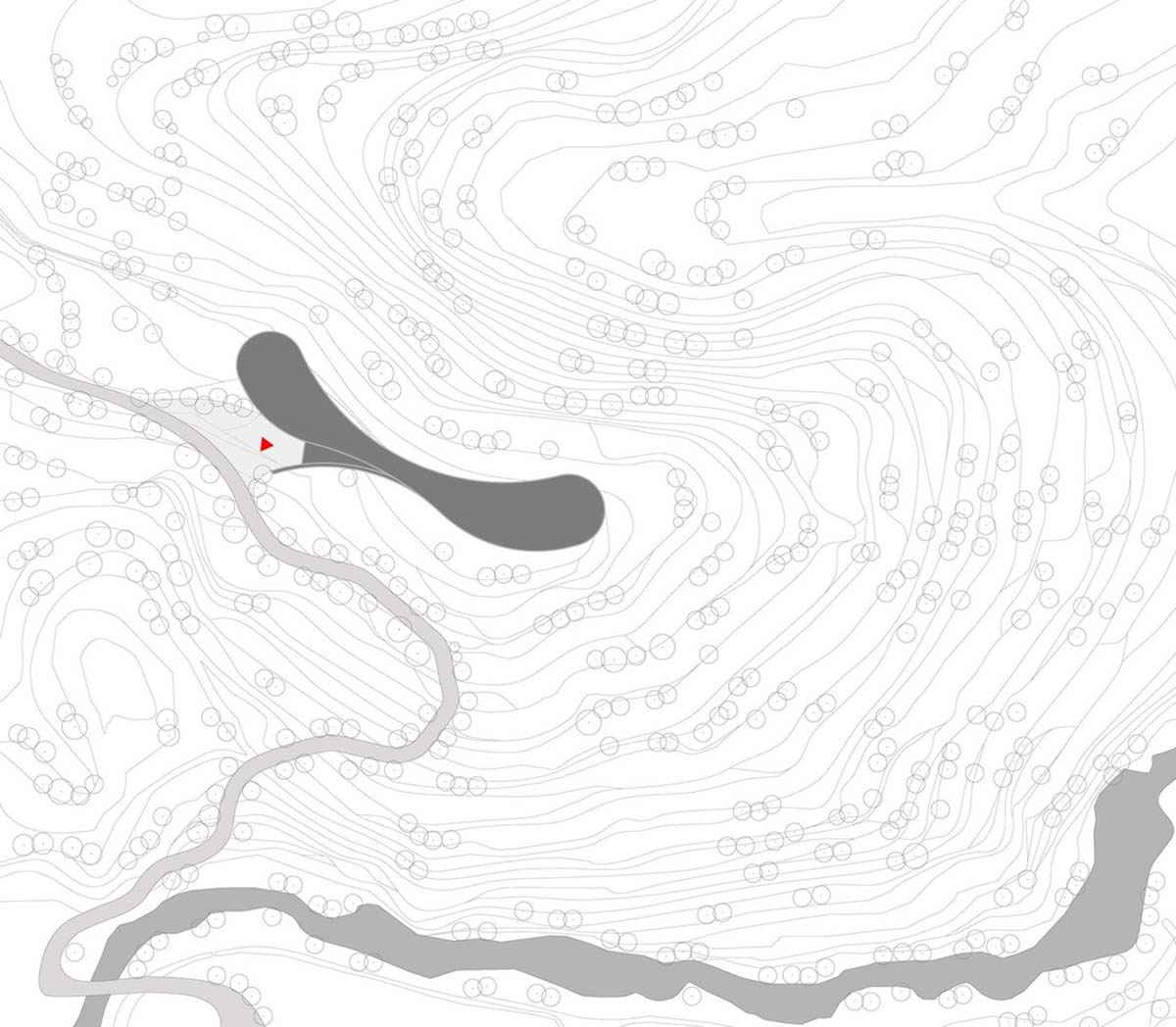
Site plan
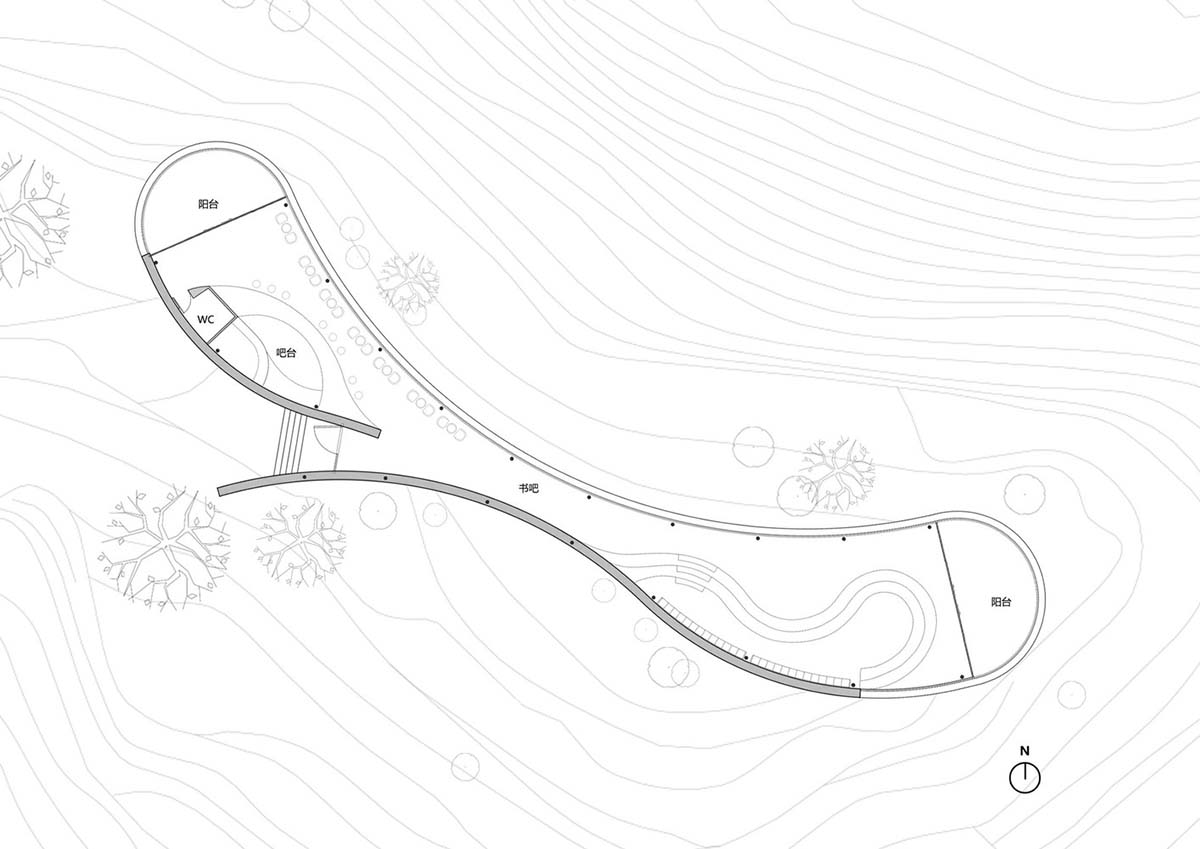
Plan
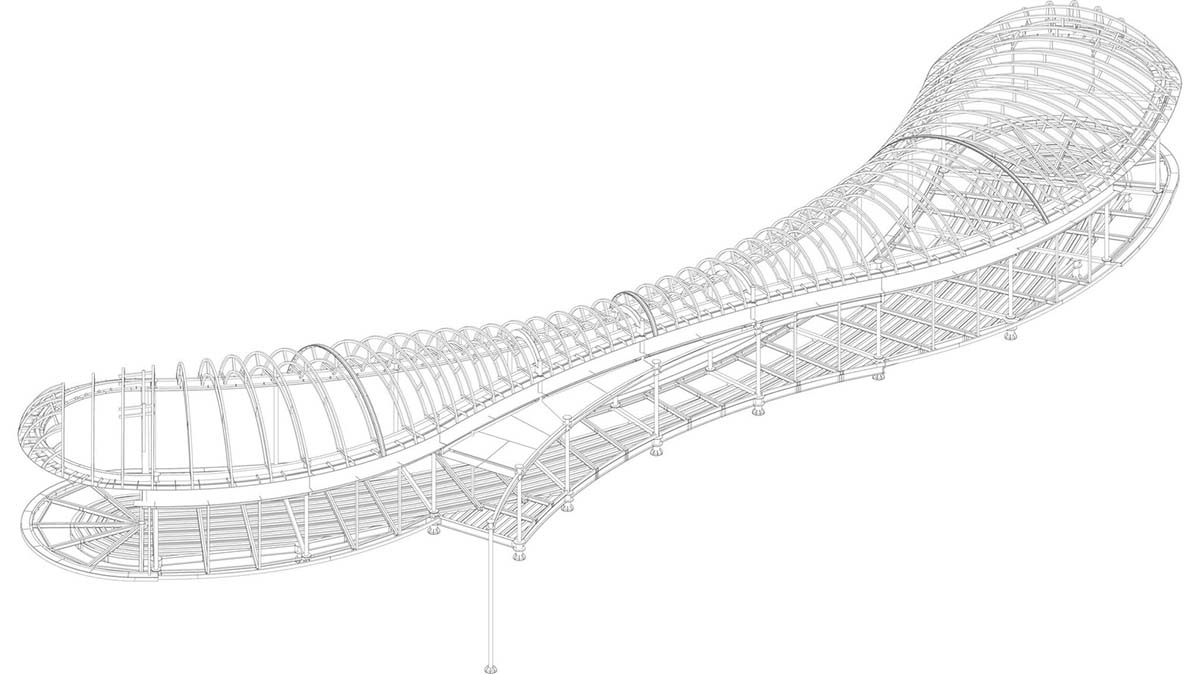
Structrure
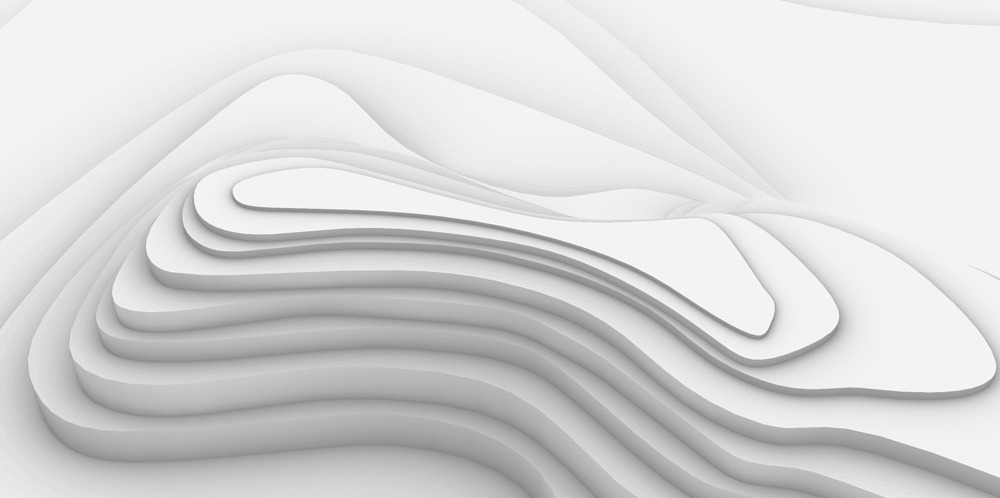
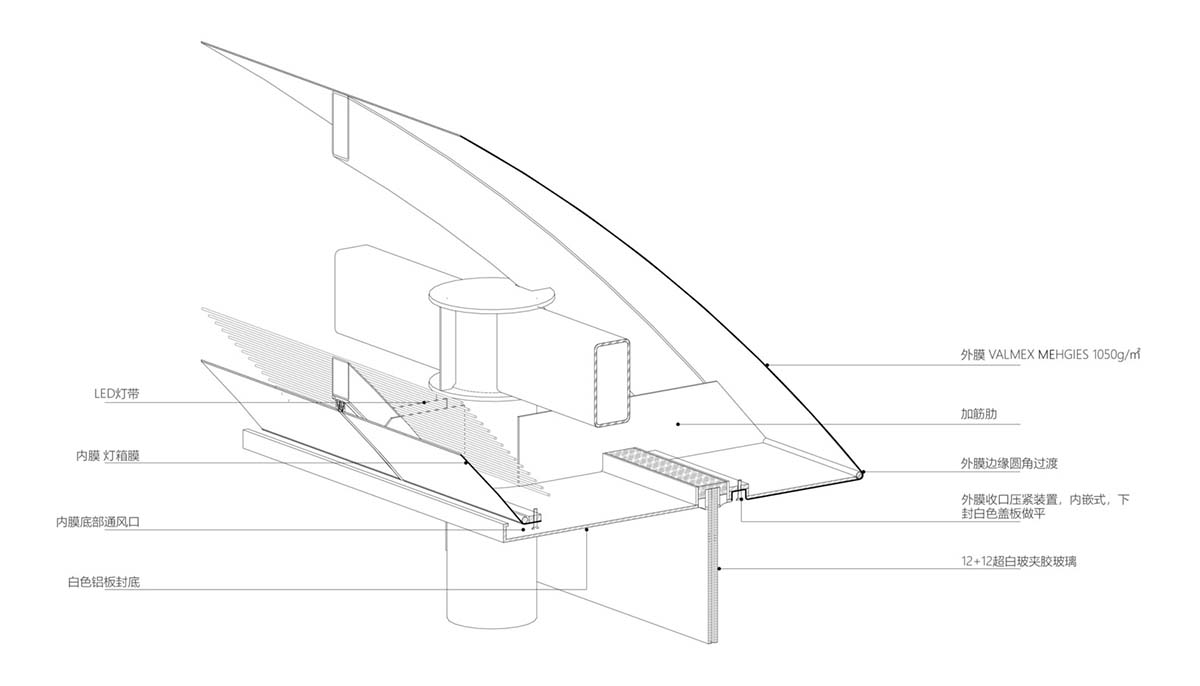
Membrane structure node
All images © Xiaowen Jin unless otherwise stated.
All drawings © gad·line+ studio
> via gad·line+ studio
